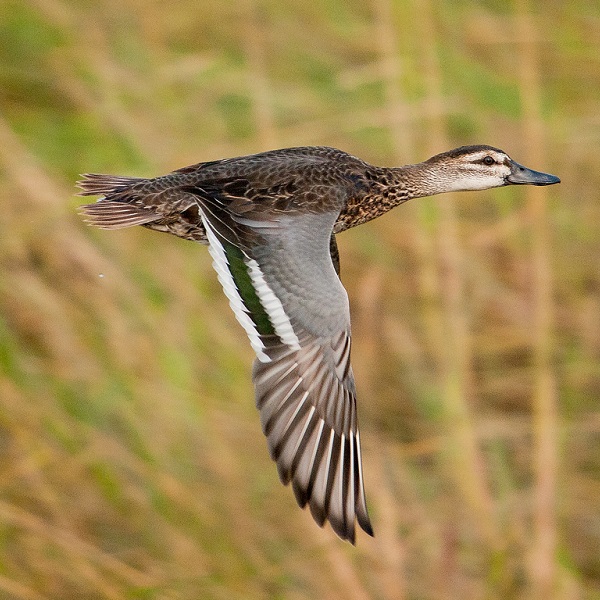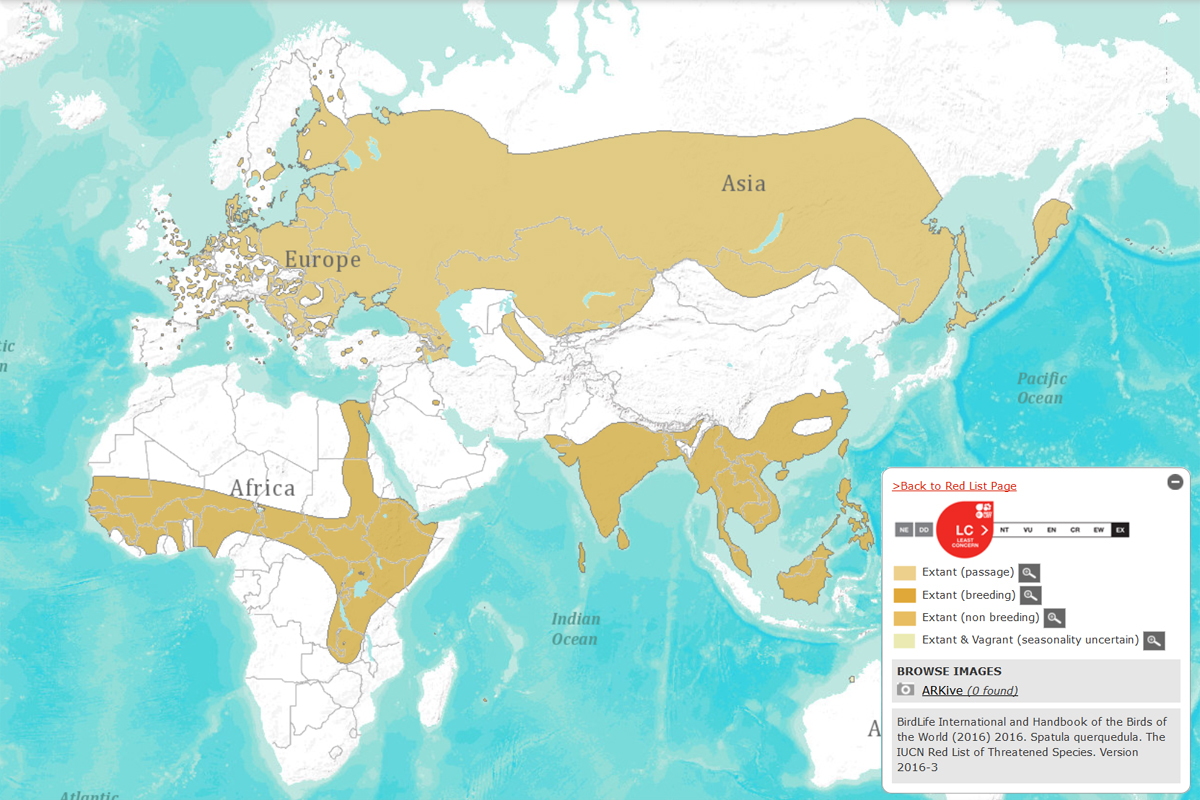You are here
Garganey

Creative Commons photo by Frankie Chu
The Garganey duck breeds in flooded fields and swamplands throughout Europe and Asia. This mid-sized duck can be recognized by the distinctive white stripe around its eye and the blue and white patches along its wings. Strictly migratory ducks, Garganeys travel from as far north as the United Kingdom to wintering grounds in the northern tropics of Africa.
Because the Garganey prefers wetland habitats, its most pressing threat is from land reclamation and drainage. The ducks are losing their habitats to reservoirs and dams that replace natural marshes. Drier fields as a result of climate change and other types of human interference are also detrimental to the Garganey. While the ducks are hunted legally in much of Europe—which is largely sustainable and beneficial to conservation—illegal killing in Africa as well as lead poisoning has been marked as a threat to the Garganey population. Although the population remains healthy, scientists are noticing a steady decline (about 30 per cent every three generations). The problems facing the Garganey, specifically loss of wetlands, is representative of alarming issues for countless other migratory birds.
Scientific Name
- Anas querquedula
Quick Facts
- As much as 30% decline over 10 years
- Breeds throughout Europe and Eurasia. Winters in Central Africa and parts of India and Australasia.
- Global population: more than 2,000,000
- Flyway: African Eurasian
IUCN Red List Status
Main Threats
- Habitat loss from wetland drainage
- Climate Change
- Human disturbance (overharvesting from hunting, lead poisoning, etc.)
Flyways

Map courtesy of IUCN, BirdLife International and the Handbook of Birds of the World 2016
